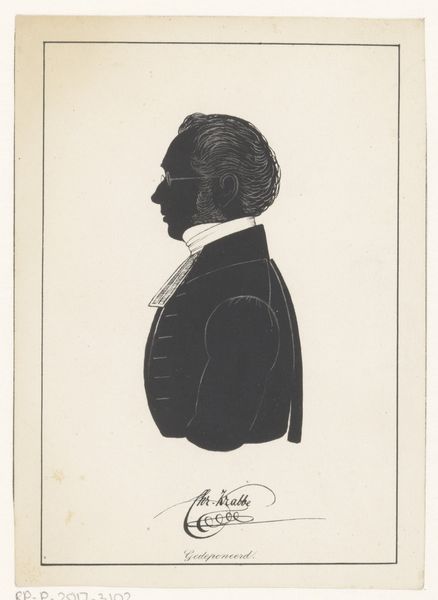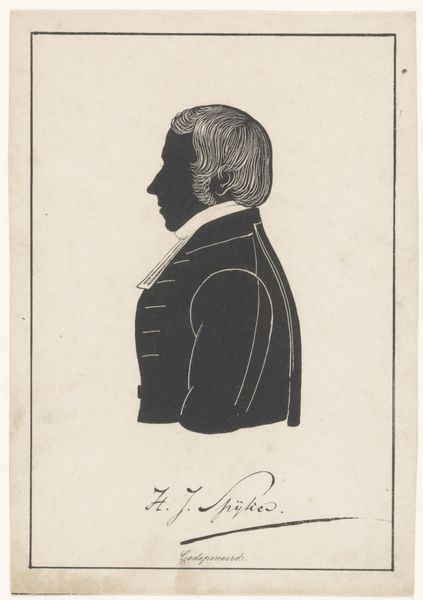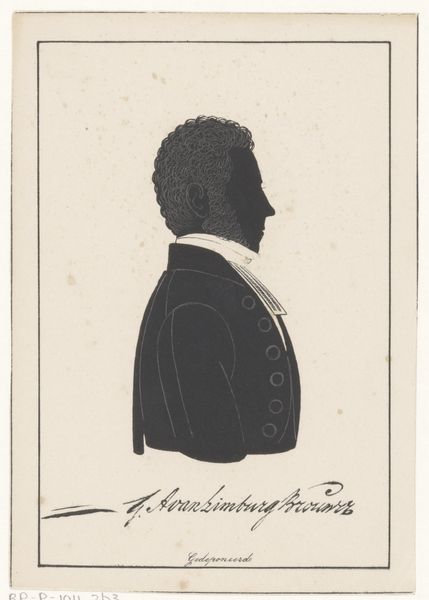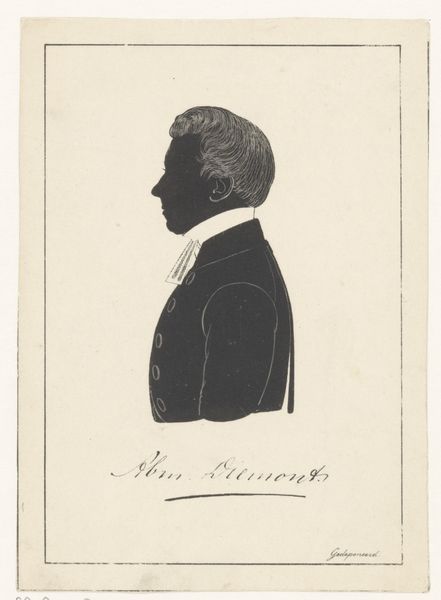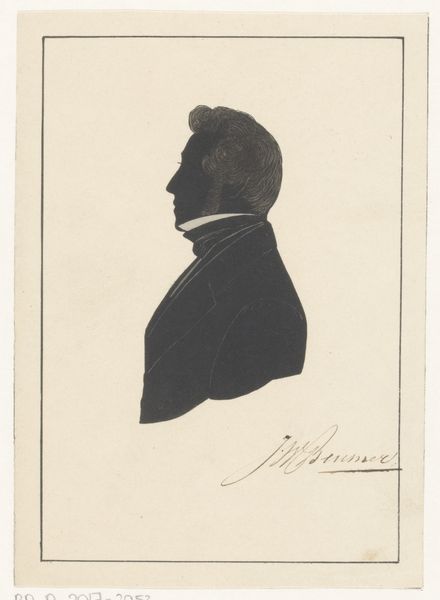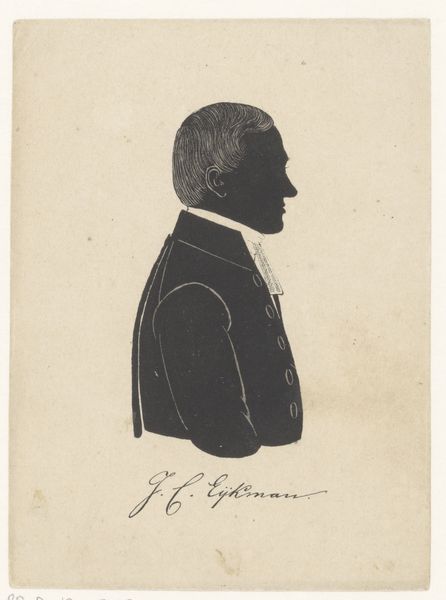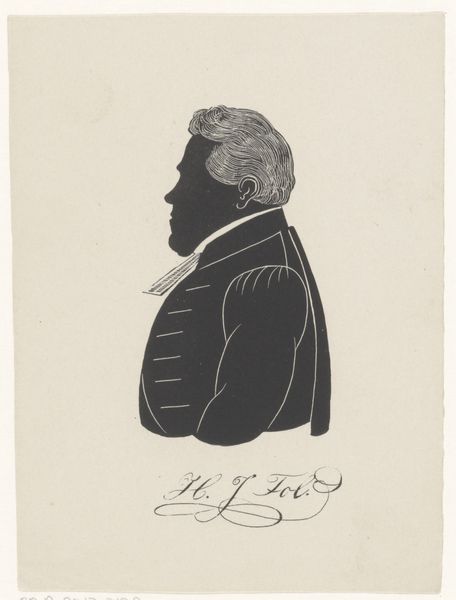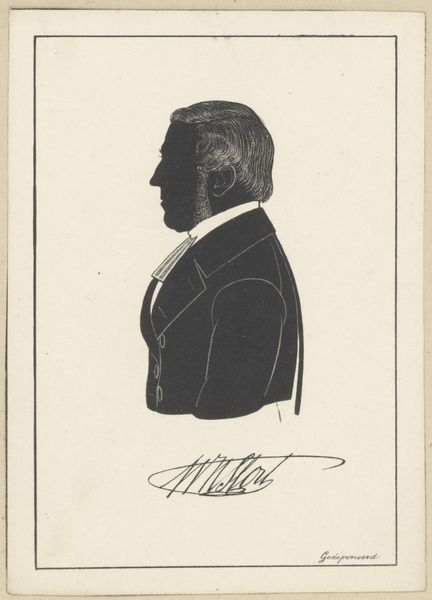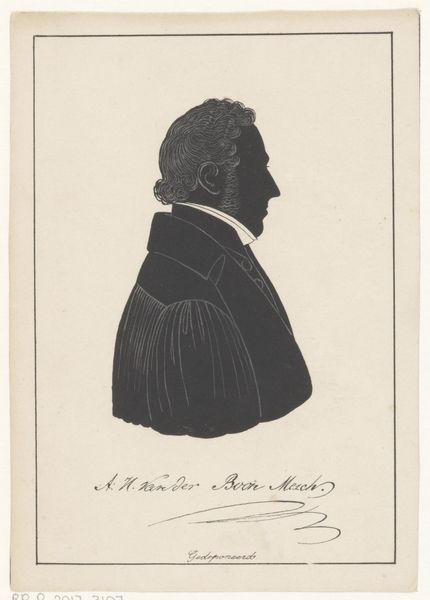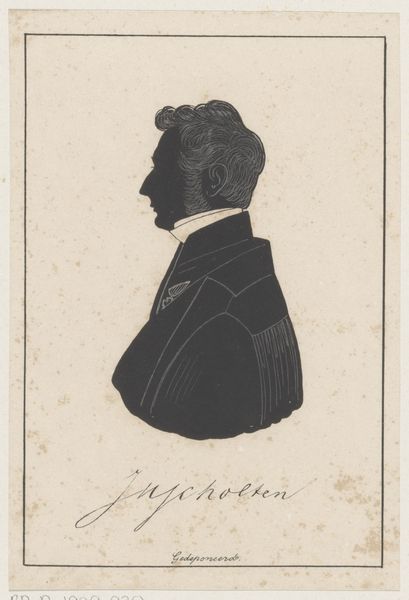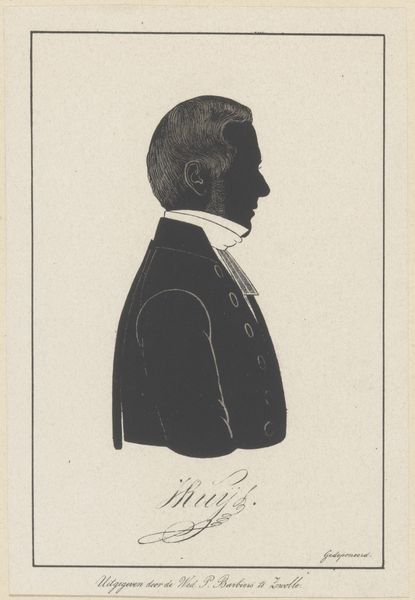
print, engraving
#
portrait
# print
#
old engraving style
#
caricature
#
academic-art
#
engraving
#
realism
Dimensions: height 149 mm, width 103 mm
Copyright: Rijks Museum: Open Domain
Curator: This intriguing print is a silhouette portrait of F. Meyjes, created between 1848 and 1862 by Pieter (IV) Barbiers. The technique is engraving. What are your initial thoughts? Editor: Striking. The stark contrast between the black silhouette and the pale background creates an immediate graphic impact. It’s incredibly economical in its details yet communicates a great deal about the subject’s posture and attire. Curator: Indeed. The beauty of silhouette portraits resides in their accessibility as they were a more affordable way to immortalize someone compared to painted portraits. Think about the social implications: wider circles could participate in image making and circulating depictions of themselves. The engraving process, itself, becomes a form of mass production, even at this scale. Editor: Agreed. But consider also the aesthetic reduction. All surface qualities—skin tone, eye color—vanish, and we're left with pure form. Notice how the artist captures the texture of Meyjes’s hair with delicate engraved lines. It introduces complexity into an otherwise flat plane. This contrast really allows the image to succeed. Curator: The labor is palpable isn't it? Every groove in that coiffure. One must also look at Barbiers himself: who was his publisher? What sort of commission would result in this engraving, and for what market? Perhaps this was for family, perhaps for official purposes. We may never know. Editor: It does beg the question, how did Meyjes react? A silhouette can be more suggestive, more open to interpretation, than a straightforward likeness. There’s a certain enigmatic quality conferred on the sitter. And this specific silhouette does suggest more gravitas and importance to the subject, wouldn’t you say? Curator: The circulation of such images would have solidified societal structures; seeing oneself and others within a certain visual vocabulary affirms position and power. It invites discussion around the production and consumption of images within society. Editor: Fascinating! From a formal view, it brings out the beauty of line and shape in capturing essence, both aesthetic and societal, and, material realities come into play too. Curator: Exactly. It has been wonderful examining both the structure of the portrait and its place in the economic landscape. Thank you for your formal insights.
Comments
No comments
Be the first to comment and join the conversation on the ultimate creative platform.
